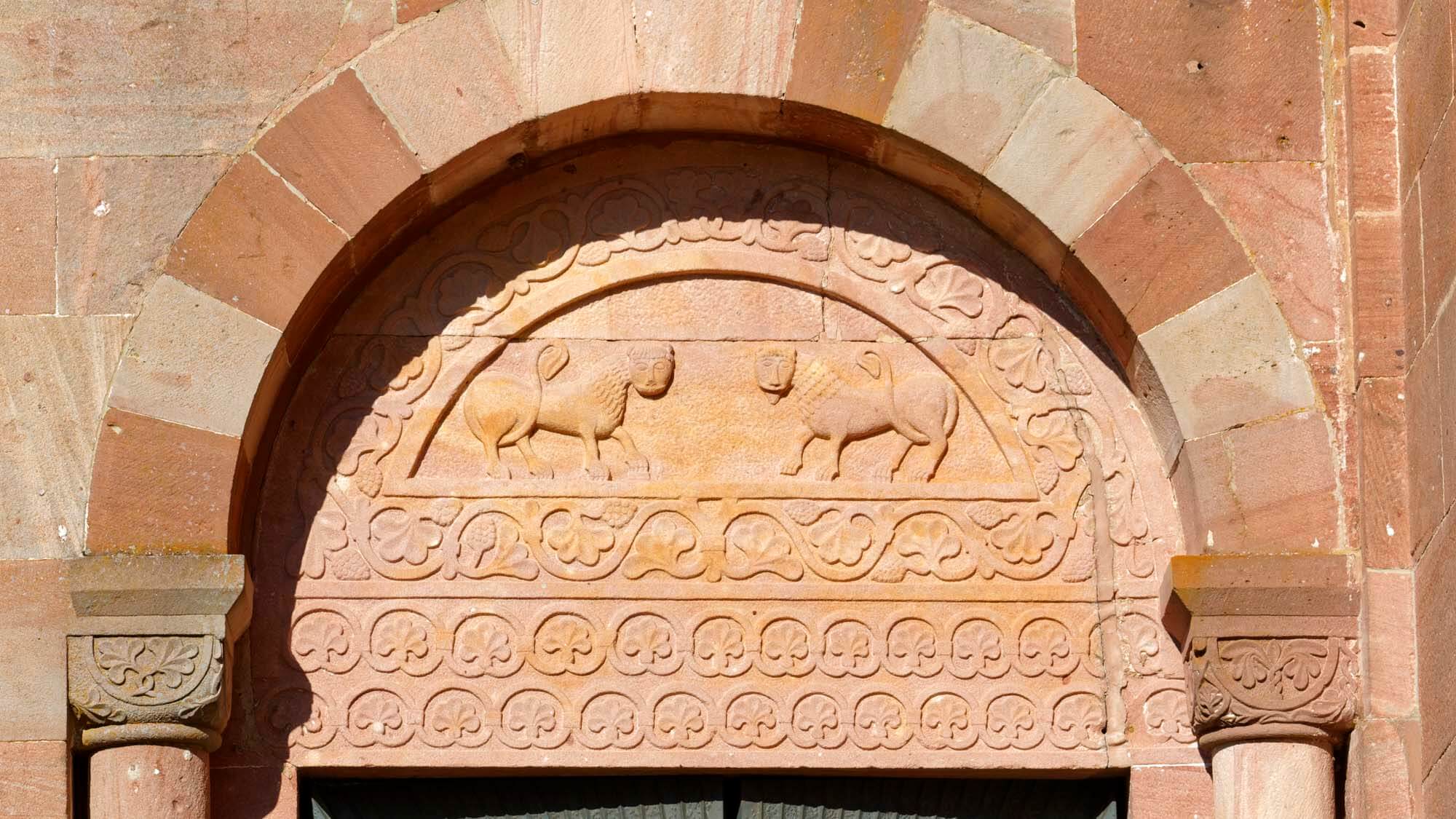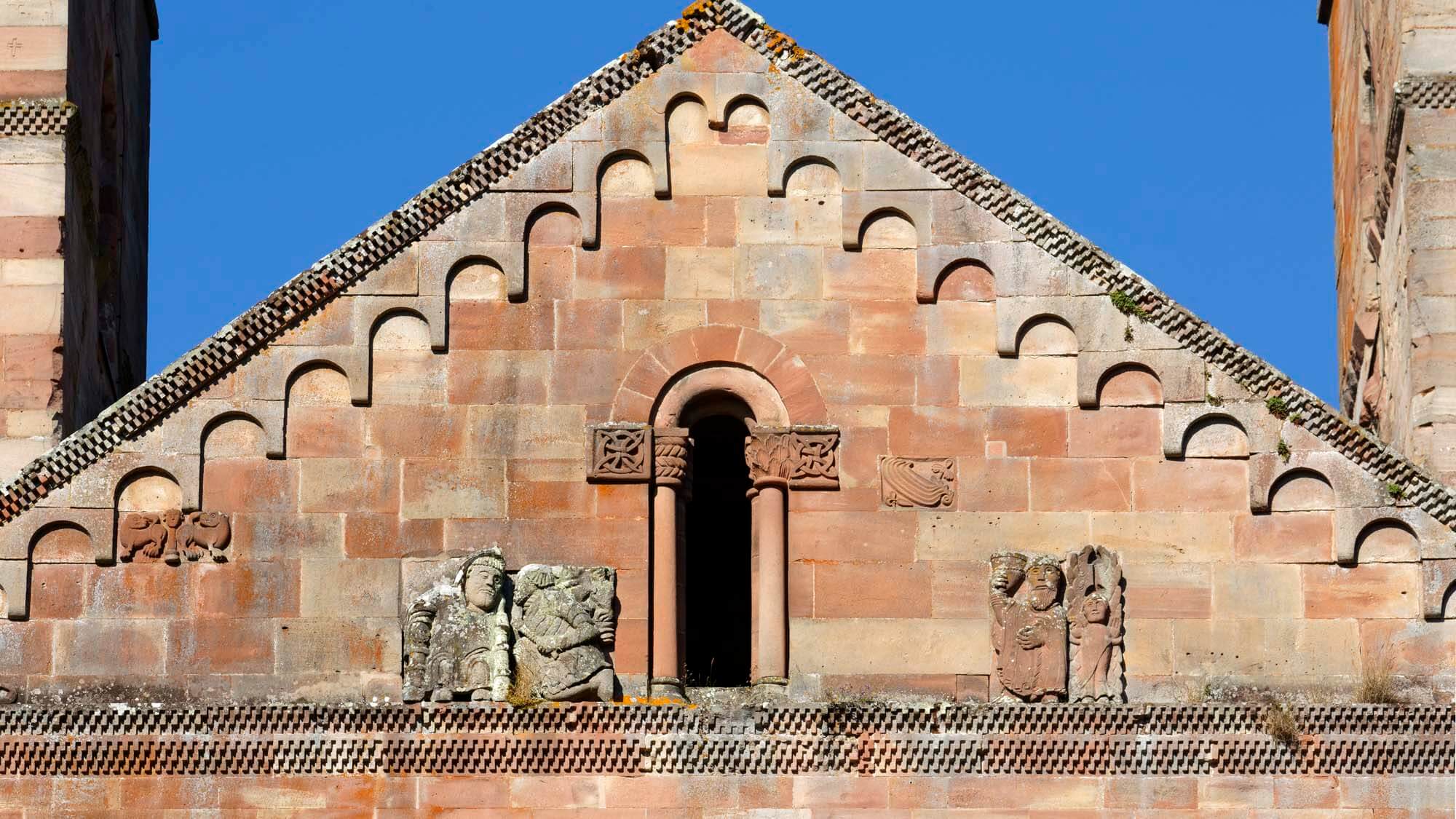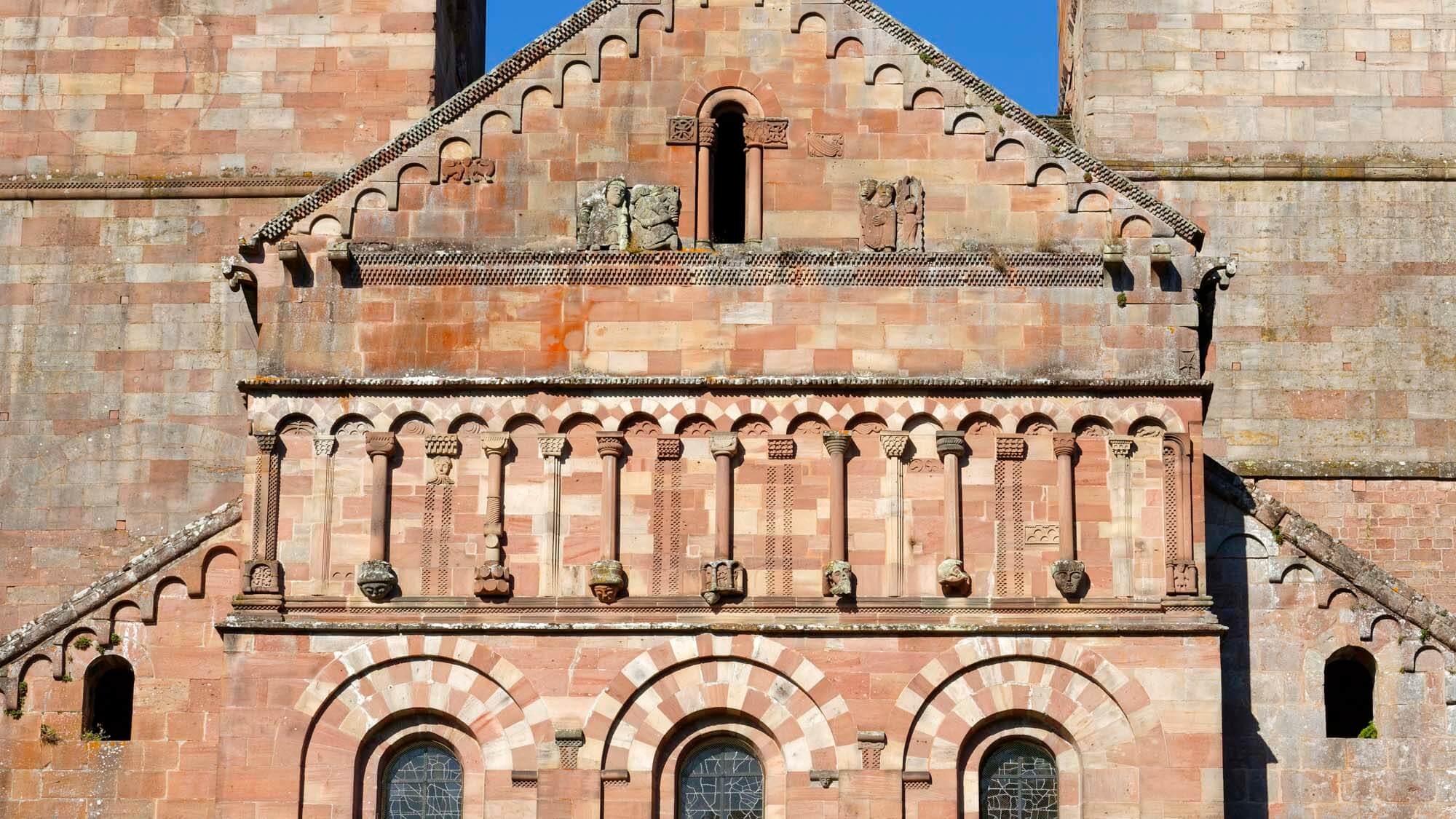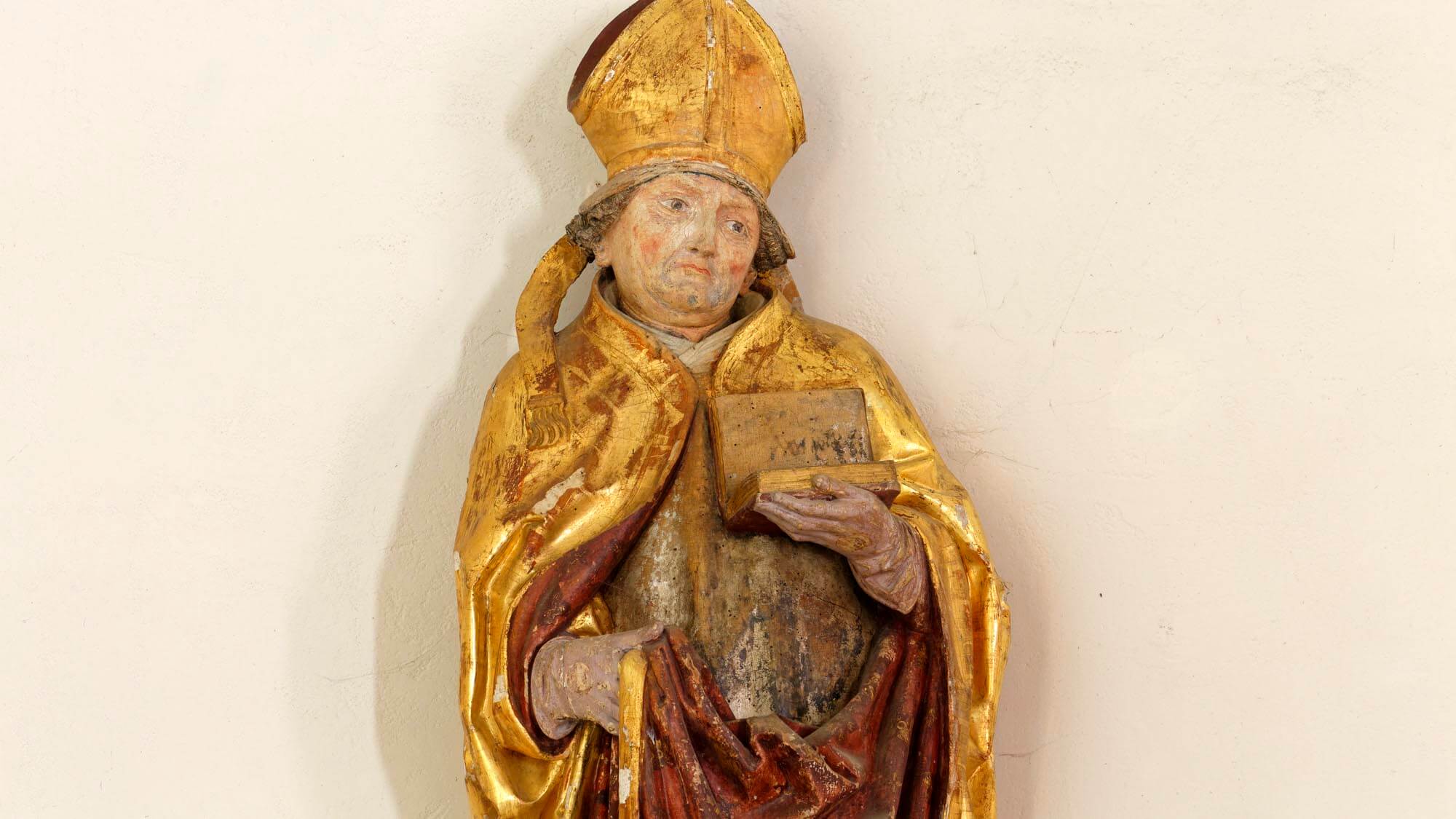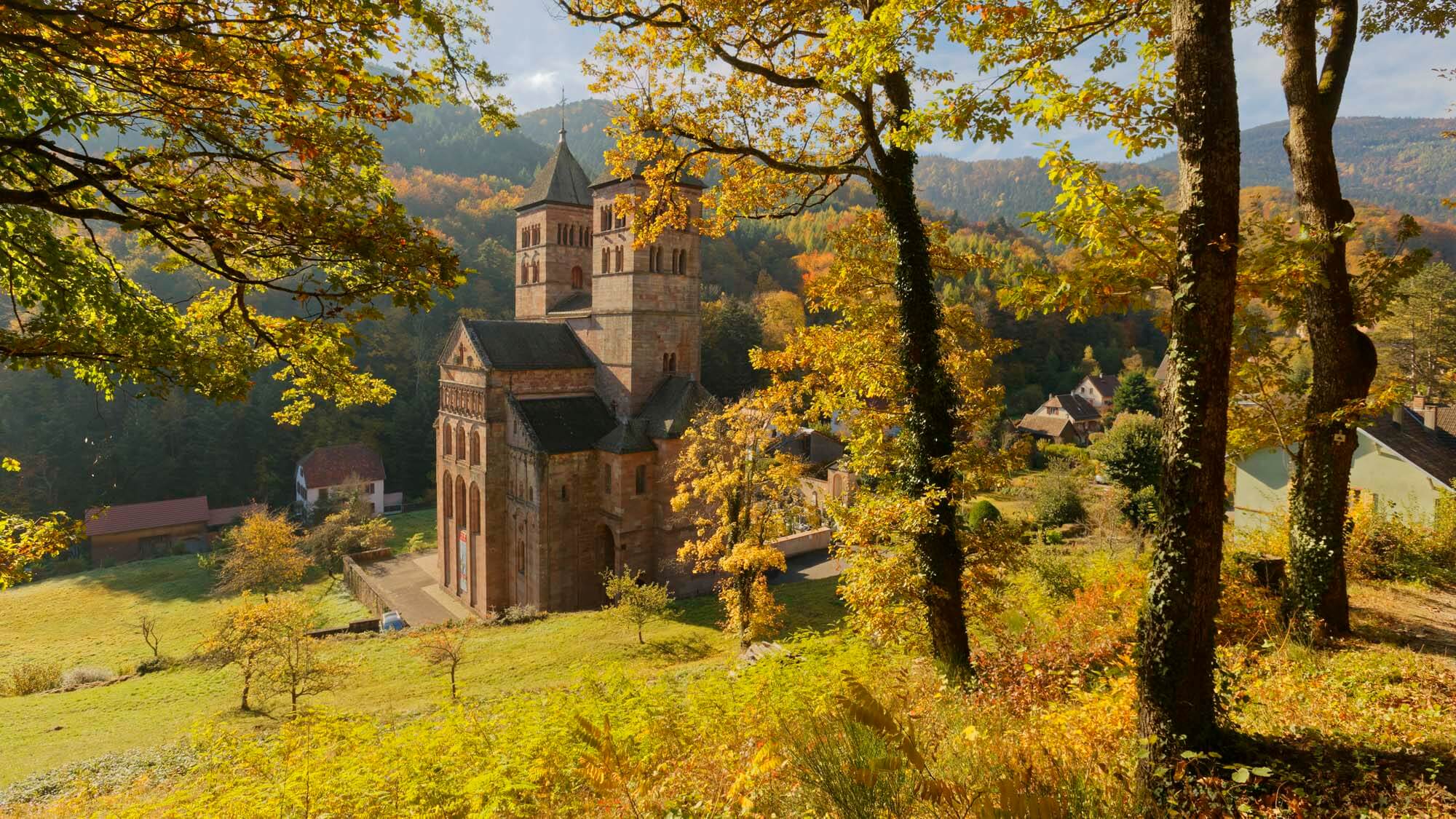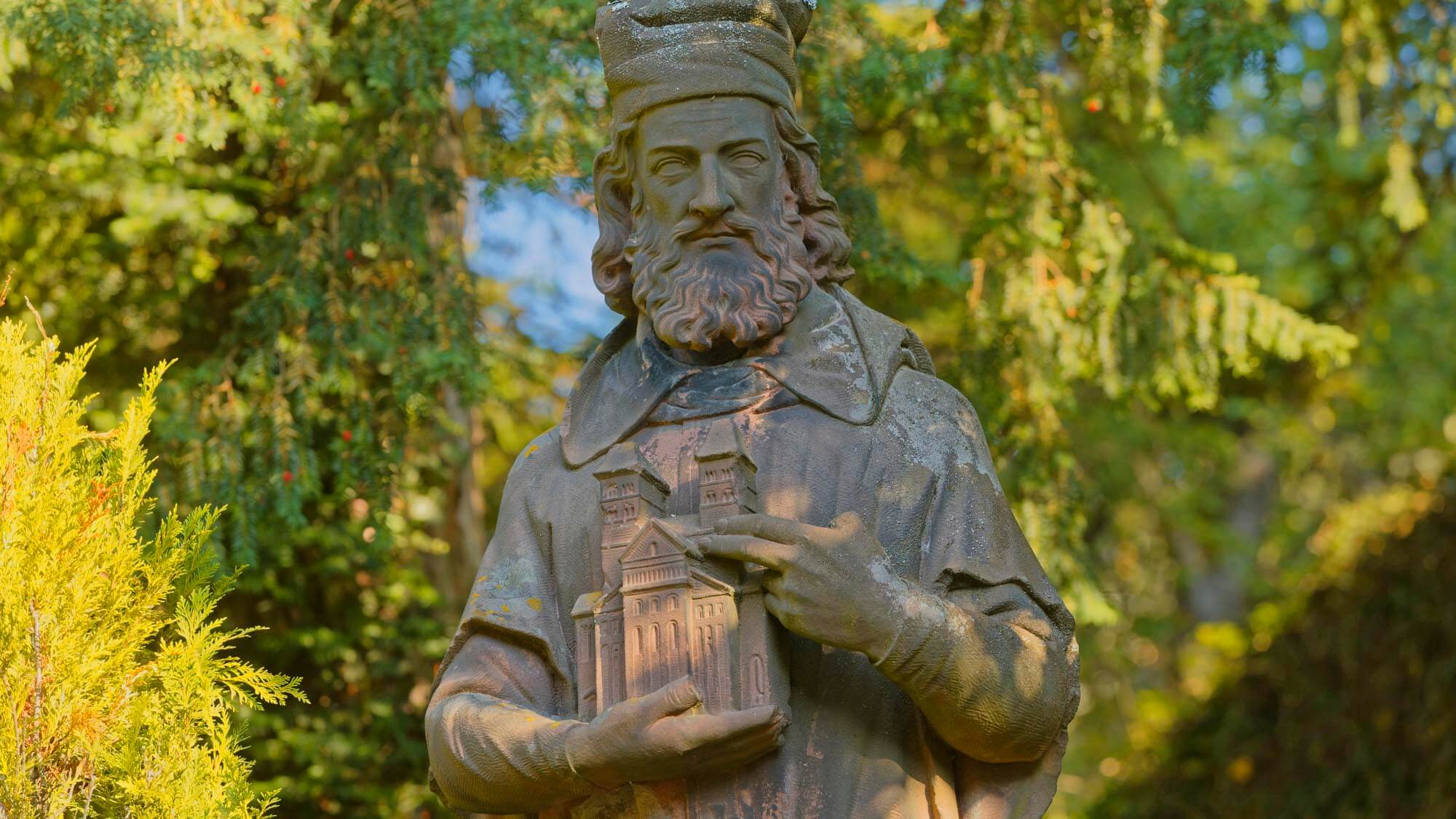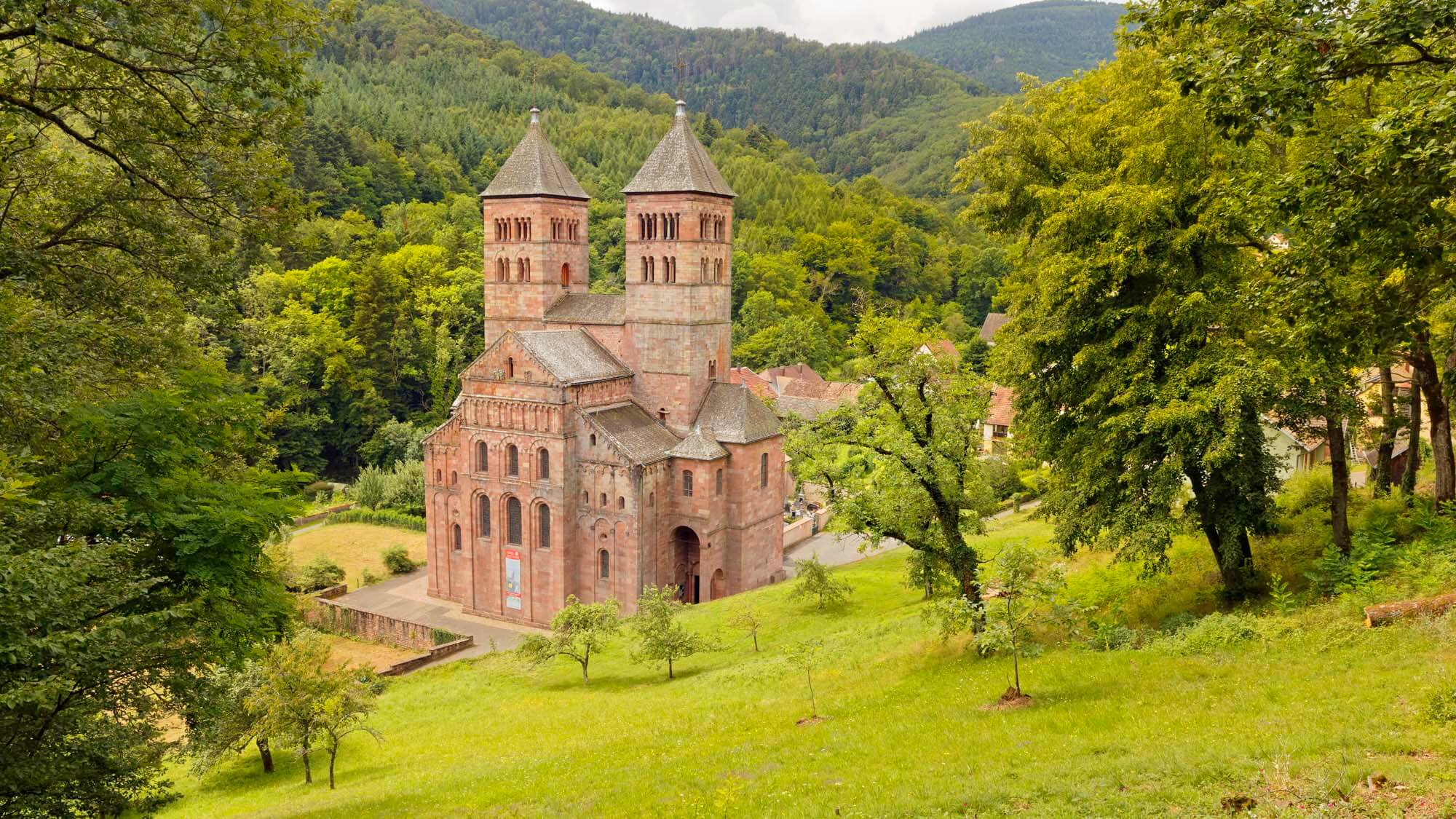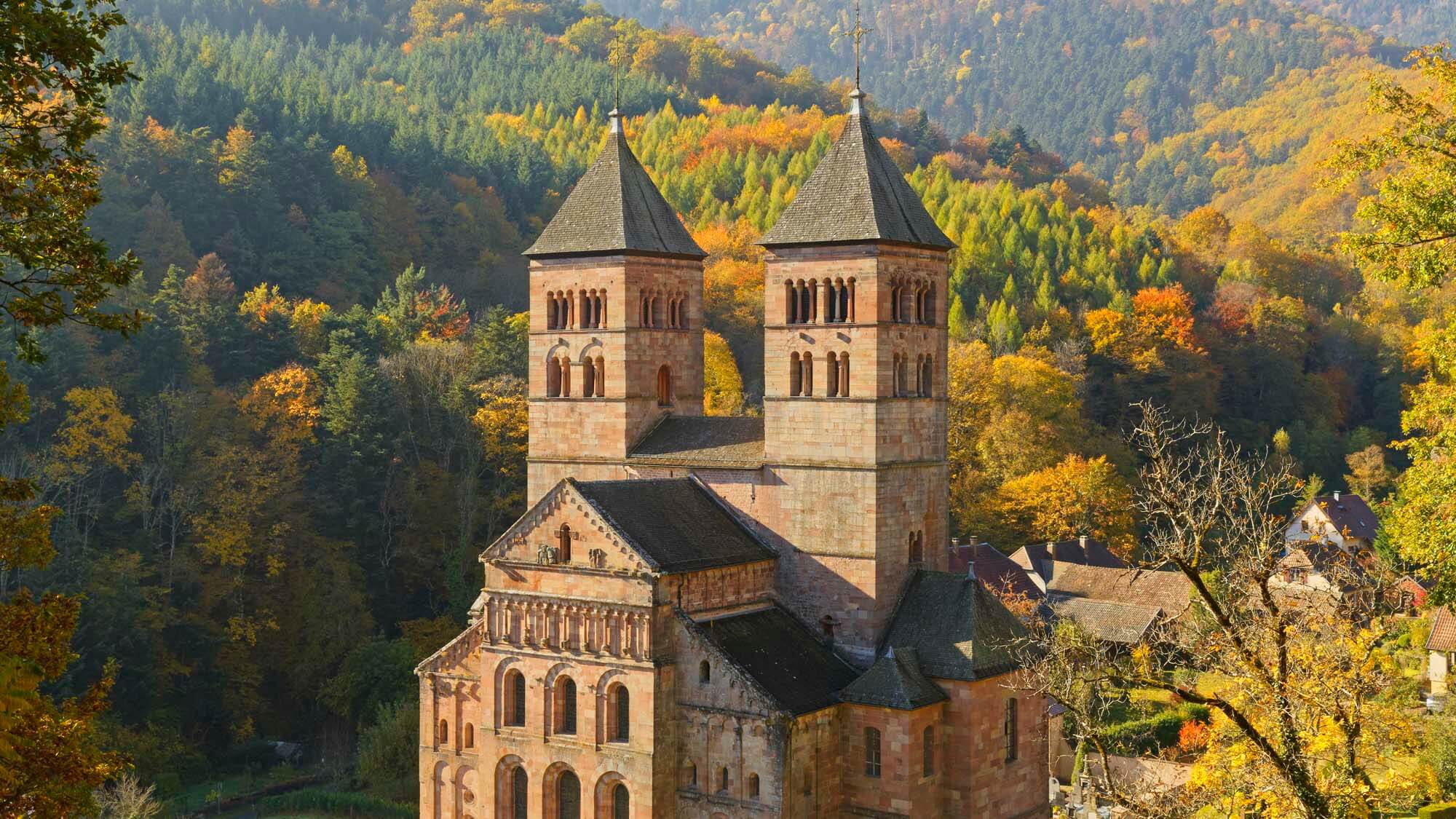Murbach Abbey
The Benedictine abbey was founded in 728 by Count Eberhard, the brother of the Count of Alsace and nephew of St Odile of Alsace. It became one of the most important abbeys in the Upper Rhine region. Its library concealed countless treasures and, according to legend, these were hidden in a former mine in the Murbach Valley during the Thirty Years’ War. The abbey from the 12th century was built following the model of the large cathedrals in the Rhine region such as those in Speier and Worms. It became a symbol of repatriation between the abbots and the House of Hohenstaufen. In the 13th century, Abbot Hugo, who had accompanied the Emperor on his pilgrimage, was declared a Prince of the Holy Roman Empire: this title was passed on to his successors until 1790. After this year the monks didn’t want to live in their lonely valley anymore; so, in 1759, they obtained permission to move to Guebwiller. This lead to the demolition of the abbey (excluding the gatehouse). Thankfully, they didn’t touch the choir and the transept of the abbey: these are still part of the current church.

